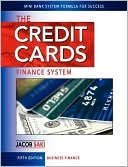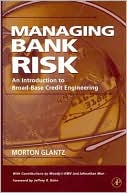from Bogle on Mutual Funds by John C. Bogle, pages 61-63
Total return is the percentage change - over a specified period of time - in a mutual fund's net asset value, with the ending net asset value adjusted to take into account the reinvestment of all income dividends and any capital gains distributions made by the fund. It is almost always calculated before the deduction of sales charges and taxes payable by the shareholder on the income dividends and capital gains distributions.
Total returns can be presented on a cumulative basis or as an average annual compound rate. I strongly caution you against relying solely on cumulative total returns. While the miracle of compounding indeed takes place as the holding period of your investment lengthens, it is simply impossible for most investors to easily compare cumulative total returns in a sensible way. For example, did a fund with a ten-year cumulative return of +100% earn an average annual compound return of +10%? (Answer: No. The annual return, reflecting the yearly compounding effect, was +7.2%.) Did a fund with a five-year cumulative return of +93% do better or worse than one with a ten-year cumulative return of +271%? (Answer: Their annual compound rates of return were identical, +14%.) Has a fund with a seemingly staggering gain of +1,602% over the 30 years ended December 31, 1992, been singularly successful? (Answer: The annual rate of return was +10%. During the same period, however, the stock market's annual return was +11%, for a total of +2,107%.) Be sure to focus on annual rates of total return rather than cumulative returns.
It might be useful to consider the difference between compound rates of return and simple rates of return. The former figure is derived from linking each year's return through multiplication; the latter figure is derived from adding each year's return. For example, consider a fund with annual returns of +20%, +25%, and -15% over three years. The value of an initial investment of $100 in the fund would be calculated as follows: $100 x 1.20 x 1.25 x 0.85, or $128, equivalent to an average annual compound rate of +8.3%. However, when the returns are simply added, the final value of the investment would be $130, a simple average rate of +10% annually.
To do full justice to the difference between the two methodologies, consider an investment that provides a return of +100% in the first year and -50% in the next, or vice versa. The average return would be +25% (100 - 50 Õ 2), but the average compound return would be zero. Since the reality is that you would have seen your initial $100 double to $200, only to fall back to $100, it is clear that zero is the appropriate figure. So you should rely on what is called the geometric rate of return - which is annualized on a compound basis and will precisely reflect the total return that you would have actually received - rather than the simple arithmetic rate.
To be sure, the use of average annual compound rates of return tends to reduce sharply the apparent gaps among good performers, mediocre performers, and bad performers. But seemingly small differences in annual rates of return can result in enormous differences in total return over long periods of time. For example, a +12% rate of return from a good performer produces a +211% cumulative return over ten years. For a mediocre performer, an +11% rate produces a +184% total return. And for a poor performer, a +10% rate produces a +159% total return. Even as you use annual rates of return as your standard of choice, then, do not ignore the magic of compounding.
Saturday, September 5, 2009
Use Compound Annual Returns, Not Cumulative Returns
Subscribe to:
Post Comments (Atom)












0 comments:
Post a Comment